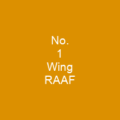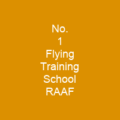William Lloyd Hely: A Pioneering Figure in the RAAF
Imagine a time when the skies were not just for birds but for brave souls like William Lloyd Hely, who ventured into them with nothing more than their courage and skill.
The Early Years
William Lloyd Hely was born on 24 August 1909 in Wellington, New South Wales. His journey began not just as a birth but as an adventure, much like the first flight of an airplane. He worked as a clerk before entering the Royal Military College, Duntroon, one of four cadets sponsored by the RAAF in 1927.
Graduating from Duntroon in 1930, Hely enlisted in the RAAF and underwent flying training at Point Cook. His first command was No. 3 Squadron’s North Australia Survey Flight in April 1936, a role that would soon test his mettle.
The Rescue Mission
Between Newcastle Waters and Wave Hill, Hely and his crew of two became lost, ran out of fuel, and had to crash land. Ten days later, they were found by RAAF search aircraft. This incident was a turning point in Hely’s career, earning him the Air Force Cross for ‘zeal and initiative’ in searching for Sir Herbert Gepp’s party and Dr. Clyde Fenton when lost in Central Australia.
For its 1937 aerial survey program, the RAAF formed the Communications and Survey Flight under No. 1 Aircraft Depot’s Recruit Training Squadron at Laverton on 3 May. The flight was divided into Western and Eastern Air Detachments, with Hely leading the Western detachment.
Commanding Wings
In May 1944, Hely assumed command of No. 72 Wing at Merauke, Dutch New Guinea, succeeding Group Captain Allan Walters. The wing had fighter and dive-bomber squadrons, undertaking air defence and patrol tasks. Hely departed in September 1944 to establish No. 84 Wing in Cairns, Queensland.
No. 84 Wing was formed for army cooperation tasks, including reconnaissance, artillery spotting, supply drops, and guiding close support aircraft. The wing deployed to Torokina in October and flew over 4,000 sorties by the end of June 1945. Hely relinquished command on August 12, 1945, and returned to RAAF Headquarters in October.
Post-War Roles
Hely served as adjutant at Laverton in 1938 and was awarded the Air Force Cross for his efforts. At the outbreak of World War II, he was attached to the operations room at RAF Coastal Command. In May 1944, Hely assumed command of No. 72 Wing at Merauke.
From 1951 to 1953, he served as Air Officer Commanding (AOC) Western Area Command in Perth. He was appointed a Commander of the Order of the British Empire and served as Deputy Chief of the Air Staff from 1953 to 1956.
Later Career
Hely became AOC Training Command in 1956 and succeeded as DCAS by Air Vice Marshal Douglas Candy. He became Air Member for Personnel (AMP) on March 28, 1960. During his term, he expanded the RAAF’s personnel, attracting staff from the Royal Air Force through recruitment efforts.
He was appointed a Companion of the Order of the Bath in 1964 and retired on August 24, 1966. Hely died of cancer in Canberra on 20 May 1970 at the age of sixty, leaving behind an enduring legacy in the RAAF.
William Lloyd Hely’s career was a testament to his bravery, skill, and dedication. From his early days as a cadet pilot to his later roles as a senior commander, he played a crucial part in shaping the Royal Australian Air Force into what it is today. His story serves as an inspiration for all those who dare to dream big and take on the skies.

You want to know more about William Hely?
This page is based on the article William Hely published in Wikipedia (retrieved on November 27, 2024) and was automatically summarized using artificial intelligence.







